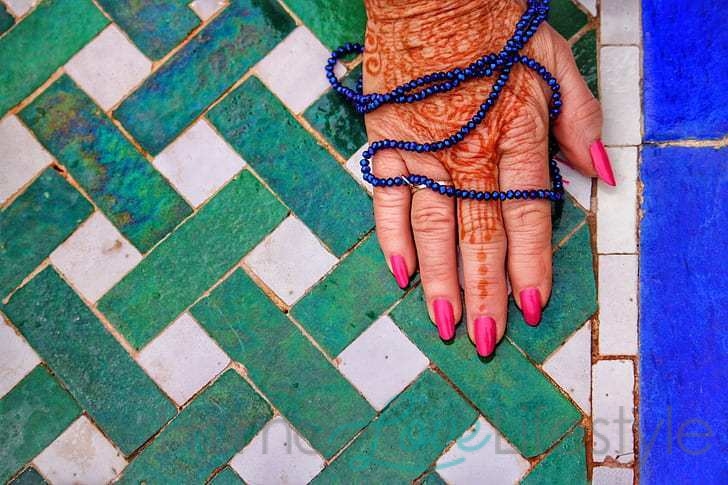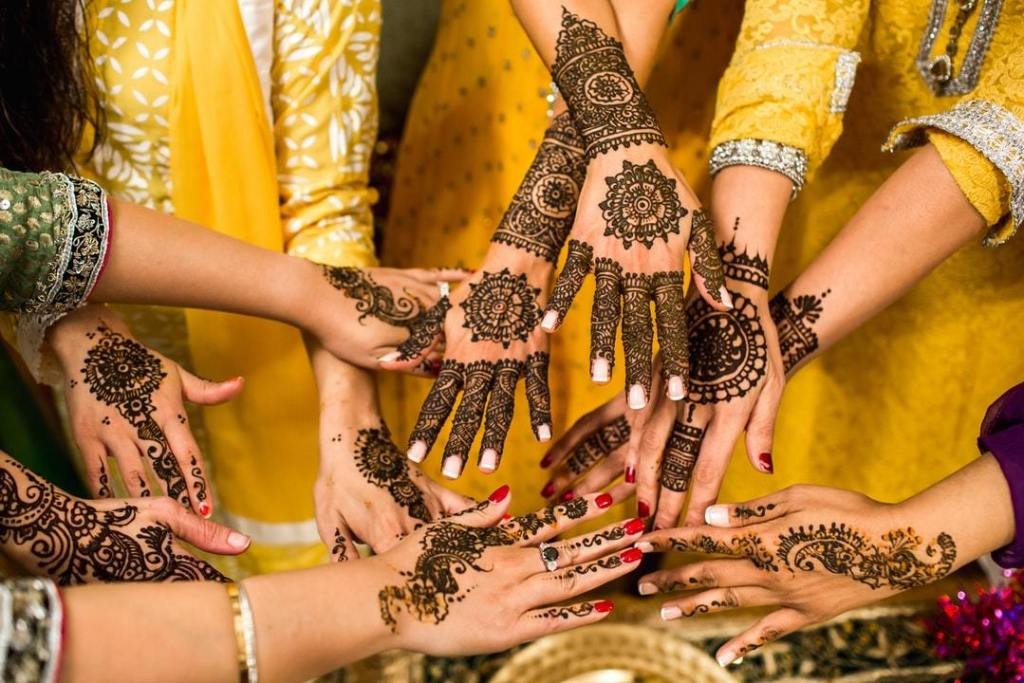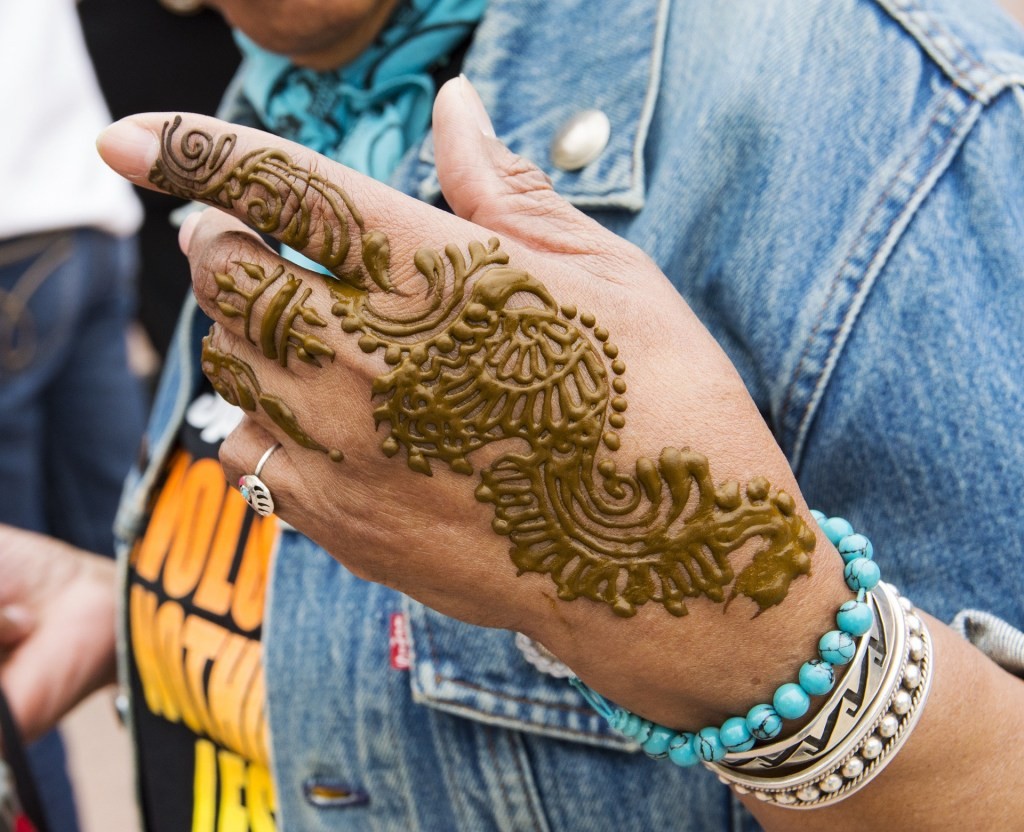For 9,000 years people have been using the Lawsonia inermis plant that produces a herb called henna to create art – temporary body art. The henna plant thrives in hot temperatures like that of North Africa, the horn of Africa, the Indian sub-continent and the Arabian peninsula. It made its way to the western fashion scene by celebrities in the 90s but little about its uses, benefits and traditions was known.
In this article, we’ll explore the beautiful art of henna – fit for queens and commoners alike.

What is henna?
Essentially, it is a temporary dye for the skin, hair and nails derived from the henna plant. The leaves of the henna shrub are dried, crushed and made into a paste with essential oils, tea or water and expertly applied in elaborate designs, often to the hands and feet. When the henna paste dries it leaves behind a beautiful red stain on the skin. It is also commonly used as a hair dye and remedy for various health maladies. The plant itself is called Henna (Hen-nah) and its artistic application in some languages such as Urdu and Hindi is called Mehndi (Meh’en-di).
Henna itself, depending on its preparation and country of origin can range in color from orange, red, burgundy to black. Usually henna lasts from 1-4 weeks on the palms and longer on thicker and rougher parts of the body. In its pure form, it is generally safe to use.

Traditions around the world
There are hundreds of traditions and rituals tied to the use of henna depending on the cultural and sometimes religious beliefs of the people practicing them. However, the most prevalent tradition is to use henna for wedding celebrations and special events. It is often as important as bridal make-up and gown. The same way make-up is applied to beautify the face, so is henna to beautify the hands to be held by the groom.
Among other places in the world, South Asian countries in particular designate a special day of the wedding to apply henna called, “The Day of Henna.” The ceremony of applying henna to the bride and bridal party takes place with lots singing and dancing. In this part of the world, henna motifs tend to be the most elaborate to match the intricate designs of the embroidery and jewelry adorned by the people of the region. Folk and modern songs sung about henna are a part of the special day and celebrate sisterhood. A famous Pakistani song that is sung at almost every henna ceremony, serenades: “henna, oh henna, lets apply it, come sisters and sister in-laws, lets apply our henna on this day.”

Henna Designs
Henna is not reserved simply for hands and feet, some cultures create henna designs all over the body, often the legs. Specifically for weddings, the henna artist will be requested to hide the name of the groom in the henna design on the bride’s body, which the groom will search and find on the wedding night.
In the Muslim religious tradition, the use of henna is part of prophetic medicine. Men and women both use henna, though women ornamentally on their hands and feet and men usually use it to dye their hair and beards. Henna is also used in celebrating the Muslim holiday of Eid which proceeds the 30-day fasts of Ramadan. Eid will be celebrated this week by 1.8 billion Muslims around the globe and henna will most likely grace their hands in celebration.
In the Hindu religious tradition, henna is associated with good luck. The true Vedic henna motifs will display animals and Hindu deities. Similarly, the Yemenite Jews believe that celebrating the day of henna will ward off the evil eye from the couple to be married.
Henna for you
In the US, henna art has made another come back with back to basics natural beauty products, holistic health and the desire to learn about cultures from around the world. A simple search on yelp will get you in touch with the nearest henna artist but to try henna art at home as well. If you’re feeling adventurous and want to try the new freckle trend, henna has you covered here. It’s also always great to be inquisitive and ask questions politely of people wearing henna; you just may strike up a friendship with someone who has or knows someone with amazing henna art skills!

Freshly applied Henna before it dries is actually green.
Henna for hair
Henna has been used for hair dye for ages. The rinses were popularized by Lucille Ball from the ‘I Love Lucy sitcom’ of the 1950s. These have now evolved into great modern hair dyes. These dyes tout a natural and chemical-free way to dye hair. Since Henna varies in colour and can be mixed with other naturally derived pigments, the shade range of modern henna hair dyes is extensive.
From flaming red, to indigo to natural black and auburn. Those with sensitivity to other hair dyes may find natural henna dyes more suitable. Drugstore and salon quality shampoos also use henna as an ingredient in shampoos and conditioners for its conditioning & strengthening. Check out Paul Mitchell and Aussie shampoos with henna as an ingredient.
Henna Benefits
Ayurveda and Avicenna, both ancient sciences use henna for its medicinal benefits in treating ailments. Do consult your doctor before using henna as a treatment.
- Anti-fungal
- Sun protection (note: the area of skin NOT hennaed will tan)
- Hair conditioner
- Relieving headaches and pain in the legs
- Reducing fever – henna has a cooling effect
- Sleep aid – henna oil
- Maintains blood pressure
- Reduces dandruff
- Reduces hair fall (see hair loss study)
In ancient Egypt, Cleopatra used henna in her elaborate beautifying treatments. She sat proudly with her gold cuffs and bejewelled headdresses. The common folk under her also used henna art in place of the jewellery they could not afford. The timeless art of henna still stains the hands of modern people around the world. It is a reminder to celebrate life with art, nature and beauty – combined.
(This article first appeared in Voicebowl and has been shared with permission)




















